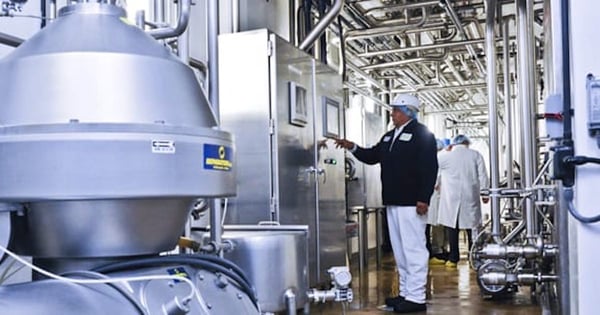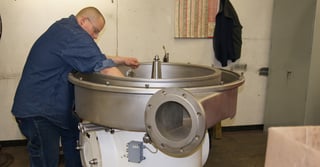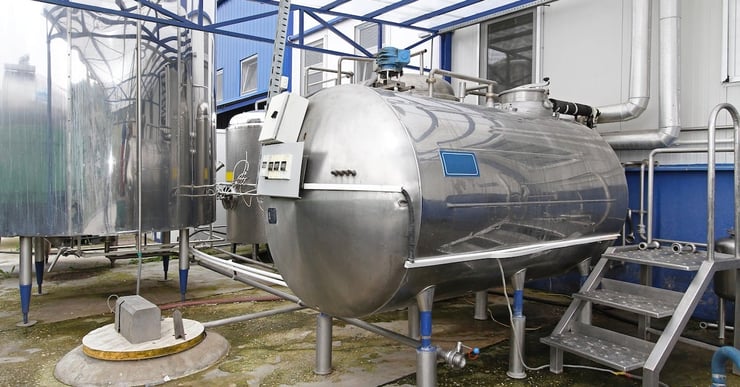Having a centrifuge is vital to many businesses. For instance, dairy companies across the country rely on a working machine to make the best milk products that consumers can find on a store shelf. Centrifuges can perform a whole gamut of operations and these machines are found in a wide range of industries.
Today, rather than talking about the general concept of a centrifuge and its accompanying technology, I'd like to take a chance to discuss their efficiency. In particular, I'll be taking a look at the milk production process.
The centrifugal separation of milk can be a tricky business if your machines aren't efficient. But how could they be more productive? We'll go over five ways to optimize your milk separator and kick your production into high gear.
1. Don't Over or Under-Feed the Centrifuge
Over-feeding is often a cause of inefficiency, but we've found that many of our clients routinely under-feed as well. Determining the right amount of feed to use is the first step to an efficient milk production process.
First, you need to determine your actual flow rate and see how it compares to your centrifuge rating. If your centrifuge is rated at 80,000 pounds per hour, that's the amount it can run under optimal circumstances.

Feeding too much product will tax your formula or milk cream separator and cause mechanical issues down the line. You can easily find out your milk separator's rating by consulting the documents that came with the machine or asking the manufacturer.
A lot of medium-sized dairy operations have centrifuges rated at 80,000 pounds per hour, but their actual flow rate can differ from that. This is an indicator that your separation process efficiency needs assessment. If the flow rate is too low, it can pull air into the feed zone, which will cause inefficiencies. If the flow rate is too high, the product won't have spent enough time in the bowl and the light phase will be carried into the heavy phase — again, resulting in decreased efficiencies.
The components of milk can be tricky to work with, but determining the optimum flow rate is one of the best ways to solve problems in the milk production process.
2. Switch Products the Right Way
During the centrifugal separation of milk, the process remains consistent so long as you control for the variables we're speaking about. But what if you need to change products? Some dairy farms have dedicated machines for each product, but it usually costs a whole chunk of change.
These are usually large operations that have multiple units of the same machine. Smaller dairy companies usually can't afford multiple, single-purpose machines. Having a formula separator, milk separator, and milk cream separator just isn't realistic. For these companies, their various products need to be run by the same machine.
Centrifuges thrive on consistency. Running a single type of product is ideal and will result in a consistent final product. However, sometimes it's not practical for a dairy business to have a dedicated centrifuge for each processing application.
Luckily, you can have different process settings programmed into your centrifuge's automation technology, making it possible to change your settings depending on which product you run. This will help you avoid issues like burn-on, inefficiencies, and solids remaining in your final product.
3. Evaluate Product Processing Temperature
 Sometimes, I run into customers facing process issues because they're not running their product at the correct temperature.
Sometimes, I run into customers facing process issues because they're not running their product at the correct temperature.
It's an easy mistake to make and can often be overlooked during the milk production process.
During the centrifugal separation of milk, the temperature needs to remain consistent to avoid inefficiency. At warmer temperatures, the milk production process will eat up power. this power inefficiency is not only detrimental to your machine's lifespan, but it will also send your power bill soaring.
The centrifugal separation of milk also needs to be at a consistent temperature because too high of a temperature will cause more sludge in the drum of the machine. This will require a cleaning of your milk separator and halt your production process while the cleaning is performed.
Whether you're running milk that's too cold or a whey process that's not hot enough, inadequate temperatures will reduce how efficiently your separation process goes.
4. Correct CIP (Clean in Place)
Running a cleaning solution through your centrifuge is essential. The equipment needs to be cleaned after each run, or day's run, so that it's ready to run the next batch of product. Not cleaning your centrifuge properly can quickly result in burn-on from left behind
Also, you need to ensure the cleaning solution has the adequate flow rate for your centrifuge. A good rule of thumb is to have the flow rate of your cleaning solution be rated at 15 percent higher than the centrifuge's capacity. This will help avoid burn-on as well.
5. A Routine Maintenance Schedule
Having a routine maintenance schedule is vital to the life of your separator. Having downtime due to making unexpected repairs is one of the most common forms of inefficiency see. After all, if your milk separator is critically damaged, or even operating at a lower efficiency, you'll see a detriment to your bottom line.
We promote a non-binding service agreement when you service with us. Our team of qualified service techs regularly inspect your machine and make repairs as needed. It's vital to do this with your equipment to prevent machine breakdowns. Getting a brand-new centrifuge can take months, and meanwhile your milk production process is interrupted at best and halted at worst. One of our goals is to increase the reality of this problem and empower dairy companies to maintain their production yields.

Problems related to inadequate maintenance happen all over the country. We would know, we have service technicians who travel all across the U.S. to provide centrifuge services inside facilities just like yours. No dairy company is exempt from the need for centrifuge maintenance, and many of them don't even know why their production levels are suffering.
Just like any area of industry, lack of efficiency takes a toll on your bottom line. And even in times when the separation process is inefficient, the reasons behind that inefficiency can be the result of other parts of your process.

